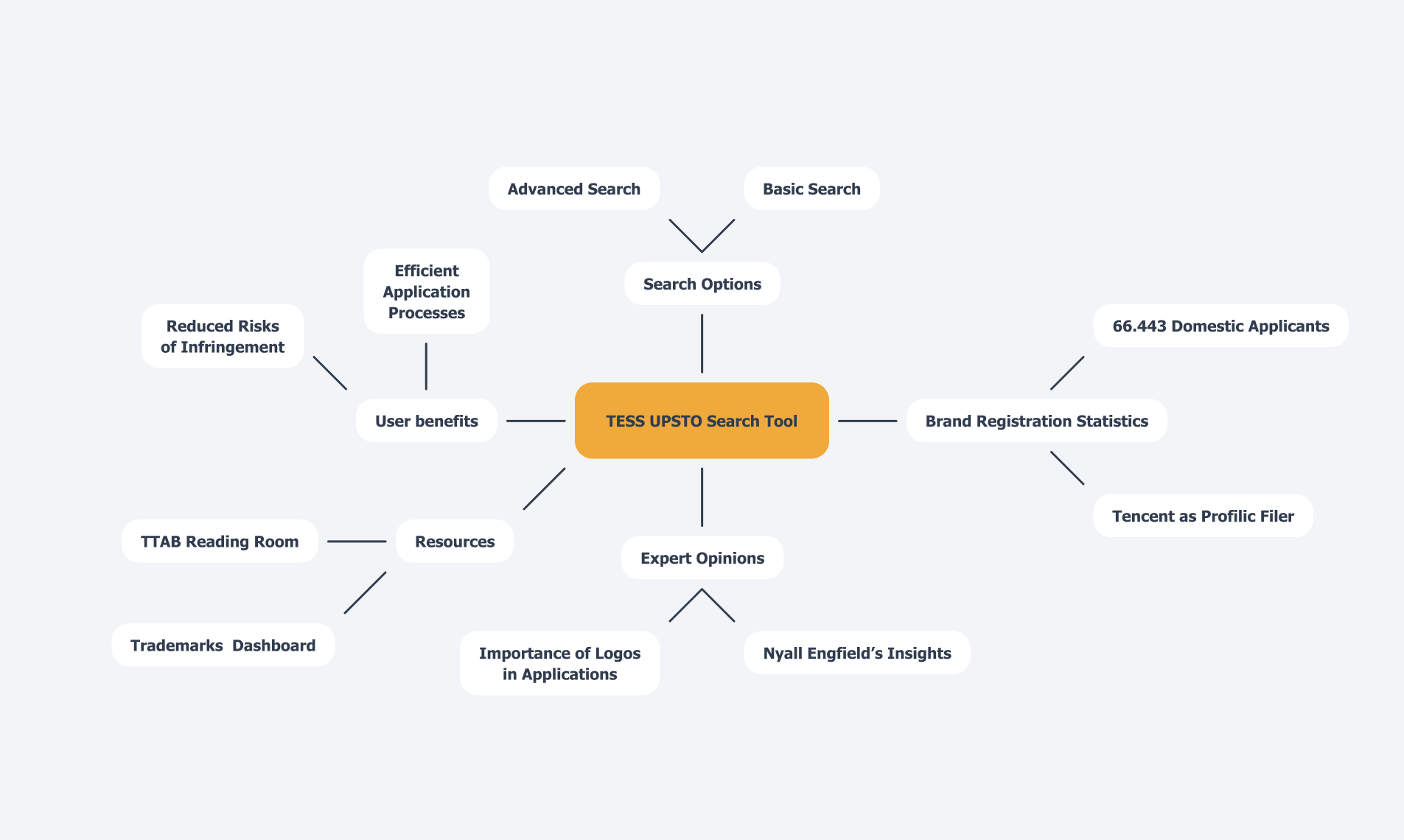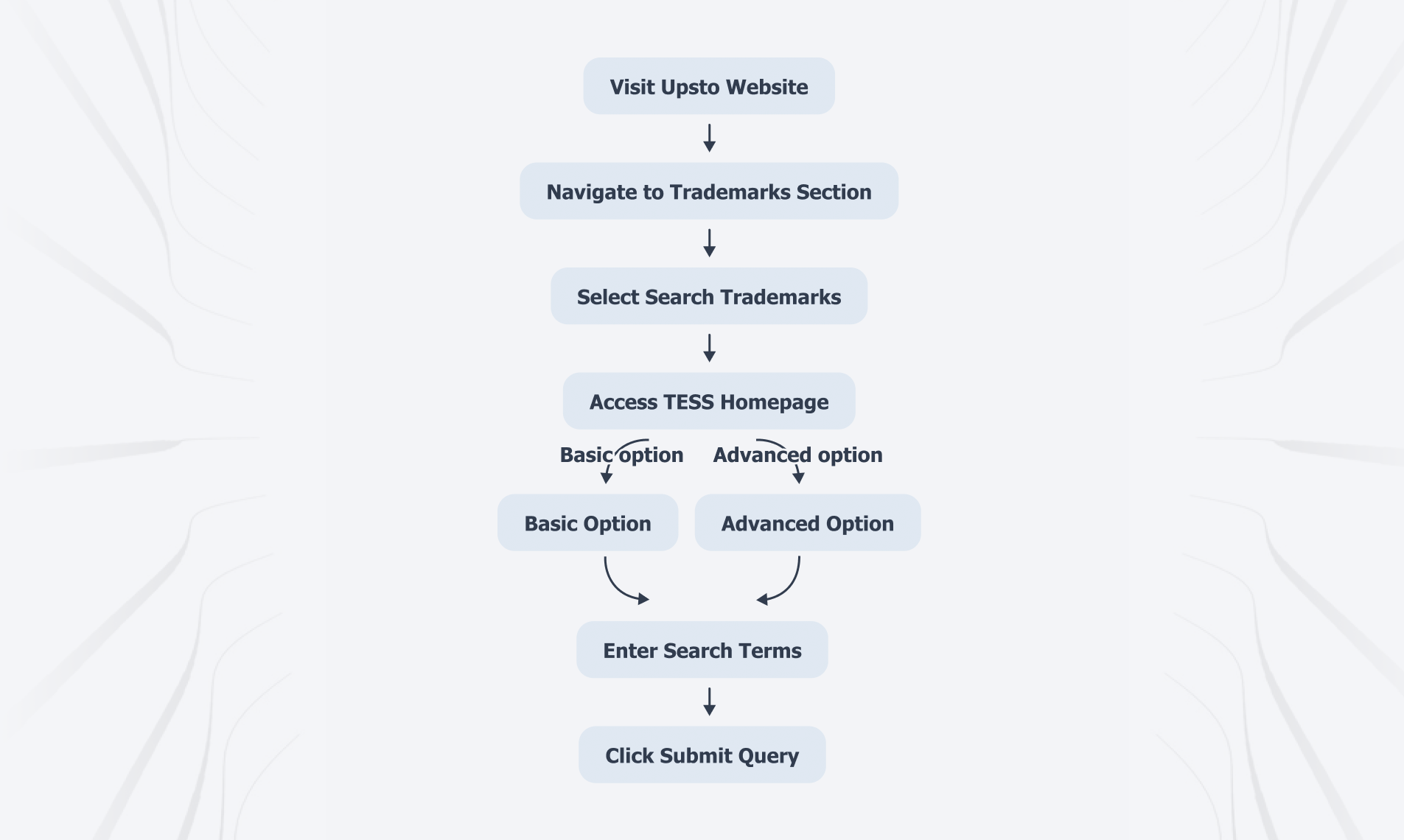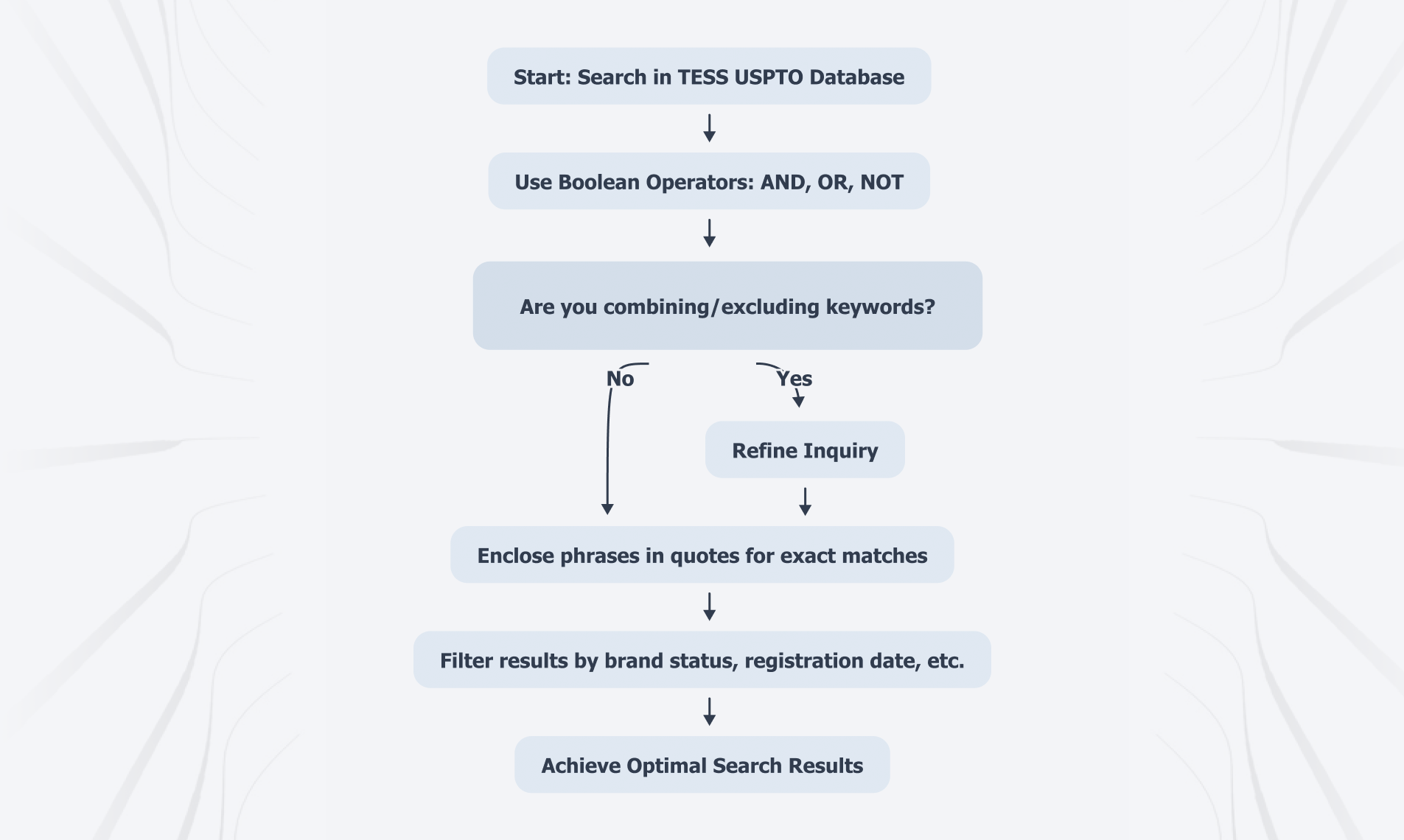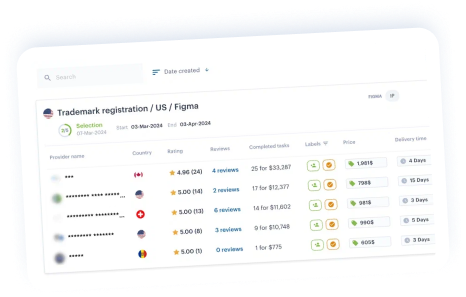Overview
Effective trademark searches using the TESS USPTO tool are crucial for brand protection and management. To maximize the search experience, it is essential to understand the tool’s functionalities, employ advanced search techniques, and troubleshoot common issues. Familiarizing oneself with the tool’s interface is vital; utilizing Boolean operators can significantly enhance search accuracy and efficiency. This knowledge not only aids in navigating the complexities of trademark searches but also empowers users to protect their intellectual property more effectively.
Ultimately, mastering these techniques is a strategic step toward successful brand management.
Introduction
In the competitive realm of brand protection, grasping the intricacies of trademark registration is paramount. The Trademark Electronic Search System (TESS), provided by the United States Patent and Trademark Office (USPTO), stands as a vital tool for businesses aiming to safeguard their intellectual property. With trademark filings surging—thousands of applications submitted each quarter—the necessity for effective search strategies has never been more critical.
This article explores the functionalities of TESS, offering insights on:
- Navigating its features
- Employing advanced search techniques
- Troubleshooting common issues
The goal is to optimize the trademark search experience and ensure robust brand management.
Understand the TESS USPTO Search Tool
The Trademark Electronic Inquiry System (TESS) serves as an essential online resource offered by the United States Patent and Trademark Office, facilitating thorough brand investigations. This powerful tool empowers individuals to determine if a mark is already registered, thereby mitigating potential legal disputes. With a variety of search options—including both basic and advanced searches—users can tailor their inquiries based on specific criteria such as brand name, owner, and registration status.
As we look ahead to 2025, the U.S. brand registration landscape remains robust, with 66,443 domestic applicants filing for marks in just the first quarter. This statistic underscores a growing commitment to brand protection. Effectively leveraging tess uspto is crucial for companies aiming to safeguard their intellectual property, with experts in the field emphasizing tess uspto‘s pivotal role in the registration process. For instance, incorporating logos and design elements into brand applications can provide broader protection for businesses, enhancing their market visibility. Nyall Engfield has noted that Tencent has emerged as the most prolific filer of marks in recent years, highlighting the competitive nature of brand registrations.
The Marks Dashboard, which delivers quarterly data summaries, aids users in understanding operations and making informed decisions. By offering insights into quality, pendency, and application filings, TESS USPTO significantly enhances the decision-making process for users, while real-world examples further illustrate TESS USPTO’s effectiveness. Firms utilizing this tool for brand inquiries report more efficient application processes and reduced risks of infringement. Additionally, the USPTO has recently introduced the ‘Trial and Appeal Board Reading Room,’ providing access to TTAB decisions—a valuable resource for those navigating brand disputes. Familiarizing oneself with the system’s interface and functionalities is a critical step toward conducting effective trademark searches and ensuring robust IP management.

Access the TESS Tool and Set Up Your Search
To access the tool, visit the USPTO’s official website at www.uspto.gov. From there, navigate to the ‘Trademarks’ section and select ‘Search Trademarks’ to locate the link for the TESS USPTO (Trademark Electronic Search System). Upon reaching the TESS USPTO homepage, you will encounter various inquiry options. For straightforward inquiries, opt for the Basic Option; for more intricate explorations, choose the Advanced Option. Enter your search terms in the designated fields and click ‘Submit Query’ to initiate your search.
In 2023, the USPTO experienced significant traffic, reflecting a notable increase in users seeking information regarding brand registrations.
This surge underscores the growing importance of brand registration, particularly as 10% of applications were for international registrations through the Madrid Protocol. Notably, the most sought-after category for registration applications was Class 9 (technology), accounting for 20% of total submissions in 2023. For individuals exploring the TESS USPTO website, professional guidance emphasizes the necessity of understanding the interface. Intellectual property lawyers recommend utilizing the Advanced Search for comprehensive outcomes, especially when dealing with common terms or similar marks. Additionally, grasping the Trademark Dilution doctrine, which protects renowned marks from dilution or tarnishing, is essential for effective brand management.
A case study of the Trademark Clearing House (TMCH) illustrates the benefits of thorough inquiries. The TMCH operates as a centralized database that aids in preventing conflicts with new domain registrations, ensuring brand owners can effectively protect their identities in the digital landscape. This is particularly relevant when using the tool, as it assists in identifying potential conflicts.
On average, conducting an inquiry with this tool may take anywhere from 30 minutes to an hour, depending on the complexity of the inquiry and the individual’s familiarity with the instrument. By following these steps and utilizing the available resources, users can navigate the tool effectively and enhance their trademark exploration experience.

Utilize Advanced Search Techniques for Optimal Results
To enhance your results in the TESS USPTO database, it is essential to employ advanced retrieval techniques. By utilizing Boolean operators such as AND, OR, and NOT, you can effectively combine or exclude keywords, thereby refining your inquiry. For example, a query like coffee AND tea will yield results that encompass both terms, whereas coffee NOT tea will eliminate any references to tea. Moreover, enclosing phrases in quotation marks, such as organic coffee, ensures accurate inquiries for exact matches.
Filtering results by brand status, registration date, and additional criteria further streamlines the process. Notably, research indicates that over 60% of users employ these advanced methods to enhance their accuracy and efficiency, underscoring their significance in the brand investigation process. Becoming familiar with the ‘Search Help’ section on the TESS USPTO page can provide you with detailed guidance on maximizing these features.
Expert opinions underscore the efficacy of Boolean operators in brand research, with numerous intellectual property (IP) experts advocating for their application to navigate the complexities of brand databases. As Kathleen Hanna succinctly states, “My CV stops getting added to when I retire,” highlighting the ongoing importance of effective search strategies in sustaining a competitive edge.
Case studies illustrate that companies employing these strategies not only achieve quicker outcomes but also enhance their overall research efficiency. For instance, the case study titled “The Impact of Brand Application Filings” reveals that submitting a brand application increases the visibility of a new mark, potentially attracting interest from existing mark owners. Companies must carefully consider the risks of filing against the potential benefits, as inadequate assessment of conflicts may lead to infringement claims.
As the landscape of brand application submissions evolves, mastering these sophisticated inquiry techniques will be vital for mitigating risks and improving the brand registration process. Furthermore, the application of Trie techniques for efficient text data indexing and pattern discovery can significantly bolster your retrieval capabilities, facilitating navigation through the complexities of the database.

Troubleshoot Common Issues and Improve Your Search Experience
Navigating the TESS USPTO database can present challenges, such as unclear results and difficulties in pinpointing specific trademarks. To enhance your search experience, consider implementing the following strategies:
- Refine Search Terms: If your initial search yields an overwhelming number of results, refine your search terms. Employ advanced querying techniques, such as Boolean operators, to effectively narrow down your results.
- Broaden Criteria: Conversely, if your inquiry yields no results, expand your criteria. Double-check for spelling errors and ensure you are using the correct trademark classification codes, as these can significantly impact your search outcomes.
- Utilize USPTO Resources: For additional support, the USPTO’s ‘Help’ section serves as a valuable resource, providing guidance on common issues and troubleshooting tips. If further assistance is required, contacting the USPTO support team can clarify any uncertainties.
Common issues that users encounter with TESS USPTO include system unavailability, particularly during maintenance or updates. A ‘System Unavailable’ message typically indicates server-side issues rather than individual errors. For instance, during a recent maintenance phase, numerous individuals reported interruptions in their trademark inquiries, underscoring the importance of being informed about maintenance timelines. To mitigate interruptions, users should frequently check the USPTO website for maintenance schedules and refresh the webpage as necessary. Preparing inquiry queries in advance can also streamline the process.
Statistics indicate that satisfaction with TESS results from the TESS USPTO can be significantly improved through these proactive measures. Studies reveal that addressing common challenges can lead to a 30% increase in user satisfaction. By understanding and tackling these prevalent issues, IP managers can enhance their brand investigation efficiency and effectiveness. As one trademark professional aptly noted, ‘Proactive strategies in navigating TESS USPTO can make a substantial difference in search outcomes.

Conclusion
Navigating the complexities of trademark registration through the Trademark Electronic Search System (TESS) is vital for any business seeking to protect its intellectual property. This article has outlined essential insights into utilizing TESS effectively, including:
- Understanding its features
- Accessing the tool
- Employing advanced search techniques
- Troubleshooting common issues
By familiarizing oneself with TESS’s functionalities, users can significantly enhance their trademark search experience and minimize potential legal conflicts.
Advanced search techniques, such as the use of Boolean operators, play a crucial role in refining search results and improving accuracy.
Adopting these strategies allows businesses to navigate the competitive landscape of trademark applications more efficiently. Moreover, being proactive in addressing common challenges can lead to increased user satisfaction and more successful trademark searches.
Ultimately, the importance of a robust trademark search cannot be overstated. As trademark filings continue to rise, leveraging tools like TESS is essential for effective brand management. By optimizing search strategies and utilizing available resources, businesses can safeguard their trademarks and ensure they remain competitive in an ever-evolving market. Taking these steps not only protects intellectual property but also strengthens brand identity, paving the way for long-term success.
Protect Your Brand with Expert Trademark Search Strategies
Start now with iPNOTE to simplify your IP management and safeguard your intellectual property.
Frequently Asked Questions
What is the Trademark Electronic Inquiry System (TESS)?
TESS is an online resource provided by the United States Patent and Trademark Office that facilitates thorough brand investigations, allowing individuals to check if a trademark is already registered.
How can TESS help in brand investigations?
TESS helps users determine if a mark is already registered, which can mitigate potential legal disputes. It offers various search options, including basic and advanced searches based on criteria such as brand name, owner, and registration status.
What is the significance of brand registration statistics for 2025?
In the first quarter of 2025, there were 66,443 domestic applicants filing for trademarks, indicating a strong commitment to brand protection and a competitive landscape for brand registrations.
How can companies effectively use TESS for intellectual property protection?
Companies can leverage TESS to safeguard their intellectual property by conducting thorough trademark searches and incorporating logos and design elements into their brand applications for broader protection.
What insights does the Marks Dashboard provide?
The Marks Dashboard offers quarterly data summaries that help users understand operations, make informed decisions, and gain insights into quality, pendency, and application filings.
What benefits do firms experience when using TESS for brand inquiries?
Firms utilizing TESS report more efficient application processes and reduced risks of infringement when conducting brand inquiries.
What new resource has the USPTO introduced for navigating brand disputes?
The USPTO has introduced the ‘Trial and Appeal Board Reading Room,’ which provides access to TTAB decisions, serving as a valuable
resource for those dealing with brand disputes.
Why is it important to familiarize oneself with the TESS system?
Familiarizing oneself with TESS’s interface and functionalities is crucial for conducting effective trademark searches and ensuring robust management of intellectual property.






